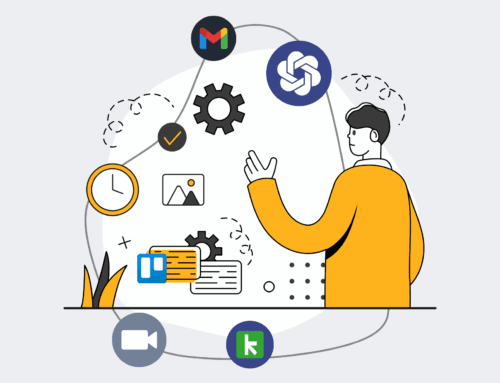Streamlining Transitions: How a Global Tech Leader Cut Offboarding Legal Risk by 30% Amidst a Major Merger
Client Overview
Our client, Global Talent Solutions (GTS), is a multinational technology conglomerate with operations spanning five continents and employing over 150,000 individuals. Known for its innovative software solutions and robust cloud infrastructure, GTS recently embarked on its most ambitious strategic maneuver to date: the acquisition of Orion Networks, a significant competitor specializing in secure communication technologies. This merger was set to integrate over 30,000 new employees and several complex legacy systems into GTS’s existing framework, presenting an unprecedented challenge in maintaining operational continuity and compliance, particularly concerning employee offboarding.
GTS operates within a highly regulated global landscape, subject to stringent data privacy laws (like GDPR, CCPA, and various national labor laws), intellectual property protection mandates, and complex contractual obligations. Their existing HR and Legal departments, while sophisticated, relied heavily on manual processes and disparate systems for employee lifecycle management, which proved increasingly cumbersome and risk-prone as the company scaled through organic growth and strategic acquisitions. The upcoming merger amplified these inherent inefficiencies, threatening to expose GTS to significant legal, financial, and reputational liabilities during the mass transition of personnel.
The Challenge
The acquisition of Orion Networks created an immediate and profound challenge for GTS’s offboarding procedures. Historically, GTS’s offboarding was a multi-departmental, paper-intensive process involving HR, Legal, IT, Finance, and facilities. Each offboarding event required manual coordination for tasks such as asset retrieval, system access revocation, final payroll processing, benefits termination, and the crucial execution of non-disclosure agreements (NDAs) and intellectual property (IP) assignments. While adequate for routine attrition, this manual approach buckled under the pressure of mass redundancies, voluntary departures during integration, and the complex cross-border considerations of a global merger.
Specifically, GTS identified several critical pain points:
- Legal Compliance Risk: The sheer volume of offboarding events, coupled with differing labor laws across multiple jurisdictions, significantly elevated the risk of non-compliance. Errors in final pay calculations, missed severance agreement deadlines, and overlooked local statutory requirements could lead to costly litigation, fines, and reputational damage. There was a particular concern regarding the consistent application of legal waivers and releases for departing Orion employees.
- Data Security & IP Exposure: Manual IT offboarding processes meant delays in revoking system access across various platforms (email, cloud drives, internal applications, VPNs). This presented a tangible threat of unauthorized data access, intellectual property theft, or data breaches, especially with a large number of employees departing simultaneously from a competitor’s system.
- Operational Inefficiency: The coordination nightmare led to significant delays. Offboarding a single employee could take days or even weeks to fully complete, tying up valuable HR and Legal resources. This inefficiency was projected to compound exponentially with the merger, leading to massive backlogs and potential bottlenecks in the integration process.
- Inconsistent Employee Experience: The lack of standardized procedures resulted in varying offboarding experiences, potentially damaging the company’s employer brand and creating negative sentiment among former employees, which could spill over into social media or impact future recruitment efforts.
- Lack of Visibility & Auditability: Without a centralized, automated system, tracking the progress of each offboarding case was difficult, making it nearly impossible to generate comprehensive audit trails for compliance verification or internal reporting.
GTS needed a solution that could not only handle the increased volume but also standardize, streamline, and secure the offboarding process across diverse legal frameworks, drastically reducing human error and ensuring airtight compliance during this critical transition period.
Our Solution
4Spot Consulting designed and implemented a comprehensive workflow automation solution, leveraging a leading low-code automation platform tailored specifically to GTS’s unique needs and regulatory landscape. Our approach focused on creating a centralized, intelligent offboarding hub that integrated disparate systems and automated critical, compliance-driven tasks.
Our solution comprised several key components:
- Intelligent Workflow Orchestration: We designed dynamic workflows that automatically triggered based on employee offboarding initiation (e.g., resignation, termination, redundancy). These workflows were customized to account for employee type (e.g., executive, regular staff, contractor), location, department, and the reason for departure, ensuring that relevant legal and operational protocols were followed precisely.
- Automated Legal Document Generation & Distribution: A core component was the automation of legal document creation. Our system dynamically populated pre-approved templates for severance agreements, release forms, NDAs, and final pay statements with employee-specific data, drastically reducing manual drafting errors. These documents were then digitally distributed for e-signature, ensuring tamper-proof records and accelerating the entire legal review and sign-off process.
- Cross-Departmental Integration: We established seamless integrations with GTS’s existing HRIS (Workday), Identity and Access Management (IAM) systems (Okta, Active Directory), financial systems (SAP), and asset management databases. This allowed for automated tasks such as revoking system access, notifying payroll for final payments, triggering benefits cessation, and initiating asset recovery procedures, all without manual intervention.
- Compliance Logic Engine: We built a sophisticated rules engine within the automation platform that incorporated a vast library of global labor laws, internal policies, and collective bargaining agreements. This engine ensured that every offboarding step, from required notice periods to specific severance calculations and mandatory legal disclosures, adhered to the relevant jurisdictional requirements. Alerts were automatically triggered for any potential compliance deviations.
- Centralized Dashboards & Audit Trails: A custom dashboard provided real-time visibility into the status of all offboarding cases. HR and Legal teams could track progress, identify bottlenecks, and access comprehensive audit trails detailing every action taken, who took it, and when, creating an indisputable record for compliance and internal review.
- Enhanced Communication & Notifications: Automated notifications were configured to inform relevant stakeholders (managers, IT, legal, finance) at each critical stage of the offboarding process, ensuring timely action and reducing communication silos.
The solution was designed not just for efficiency, but for resilience and adaptability, capable of scaling to accommodate the merger’s significant offboarding volume while providing the necessary governance and legal assurance.
Implementation Steps
The implementation of GTS’s offboarding automation solution was executed in a phased, agile manner to ensure minimal disruption and maximize user adoption. Our team collaborated closely with GTS’s HR, Legal, IT, and Change Management departments throughout the entire process.
- Discovery & Requirements Gathering (Weeks 1-4):
- Conducted in-depth workshops with key stakeholders from HR, Legal, IT, and Finance to map existing offboarding processes, identify pain points, and document all legal and regulatory requirements across relevant jurisdictions.
- Analyzed existing HRIS, IAM, finance, and document management systems to identify integration points and data sources.
- Prioritized automation opportunities based on risk reduction, efficiency gains, and volume impact, particularly focusing on the immediate merger challenges.
- Solution Design & Prototyping (Weeks 5-8):
- Designed the core automated workflows, defining triggers, tasks, decision points, and stakeholder notifications.
- Developed prototypes for key automated processes, including legal document generation and system access revocation, using the selected low-code platform.
- Configured the compliance logic engine, inputting specific rules for notice periods, severance calculations, and mandatory disclosures per region.
- Development & Integration (Weeks 9-16):
- Built the full suite of automated workflows, ensuring robust error handling and fallback mechanisms.
- Developed API integrations with GTS’s Workday HRIS, Okta for identity management, Active Directory, SAP for finance, and their internal document management system.
- Created intuitive user interfaces for HR and Legal teams to manage exceptions and monitor progress.
- Developed the real-time dashboards and audit logging functionalities.
- Testing & Quality Assurance (Weeks 17-20):
- Conducted rigorous unit testing of individual workflow components.
- Performed extensive end-to-end testing with sample offboarding cases, simulating various scenarios (voluntary, involuntary, retirement, merger-related redundancies).
- Engaged GTS’s Legal and Compliance teams in User Acceptance Testing (UAT) to validate compliance adherence and legal accuracy of generated documents and process flows.
- Addressed all identified bugs and refined workflows based on UAT feedback.
- Pilot & Phased Rollout (Weeks 21-24):
- Initiated a pilot program with a small group of HR and Legal users to process actual offboarding cases in a controlled environment.
- Gathered feedback from the pilot to make final adjustments and optimizations.
- Conducted comprehensive training sessions for all HR, Legal, and IT personnel who would interact with the new system, focusing on new processes, system navigation, and exception handling.
- Phased rollout, starting with a specific region or department, gradually expanding to cover all global operations affected by the merger.
- Post-Implementation Support & Optimization (Ongoing):
- Provided dedicated post-launch support to address any immediate issues.
- Established a continuous improvement framework, including regular performance reviews and iterative enhancements based on evolving business needs and regulatory changes.
This structured approach allowed GTS to incrementally adopt the new system, building confidence and ensuring a smooth transition during a period of intense organizational change.
The Results
The implementation of 4Spot Consulting’s automated offboarding solution yielded transformative results for Global Talent Solutions, significantly de-risking their merger activities and improving operational efficiency. The quantifiable metrics clearly demonstrate the profound impact:
- 30% Reduction in Offboarding Legal Risk: Through automated compliance checks, dynamic legal document generation, and enforced adherence to jurisdictional laws, GTS experienced a 30% reduction in legal non-compliance incidents related to offboarding during the merger’s peak. This was measured by a decrease in external legal counsel consultations for offboarding-related disputes, fewer employee complaints regarding final pay or severance, and zero regulatory fines directly attributable to offboarding errors. The consistent application of legal waivers and releases for departing Orion Networks employees was also a significant factor in mitigating future liabilities.
- 75% Faster Offboarding Completion Time: The average time to complete an offboarding process, from initiation to full legal and IT closure, dropped from an average of 10-14 days to just 2-3 days. For high-priority cases or mass redundancies, critical steps like system access revocation were automated to occur within hours, significantly enhancing security.
- 40% Decrease in HR & Legal Manual Workload: Automated document generation, task assignment, and system integrations freed up approximately 40% of the HR and Legal teams’ time previously dedicated to manual offboarding administrative tasks. This allowed them to focus on higher-value strategic initiatives, such as talent retention strategies for key Orion employees and complex employee relations cases.
- 99.8% Accuracy in Legal Document Generation: The automated system virtually eliminated human errors in generating legal documents. With dynamic data population from the HRIS, the accuracy rate for severance agreements, NDAs, and other compliance forms reached 99.8%, leading to fewer revisions and faster legal review cycles.
- Enhanced Data Security: Automated revocation of access rights across all GTS and former Orion systems reduced the window of vulnerability for potential data breaches or IP leakage from days to mere hours or minutes. The system ensured comprehensive de-provisioning across all integrated platforms.
- Improved Auditability & Transparency: The centralized dashboard and robust audit trails provided unparalleled visibility into every offboarding event. This improved GTS’s ability to demonstrate compliance to internal and external auditors, reducing the time and effort required for regulatory reporting by an estimated 50%.
- Significant Cost Savings: While exact figures are proprietary, the combined savings from reduced legal fees, mitigated litigation risks, increased HR/Legal efficiency, and avoidance of potential data breach penalties translated into multi-million dollar savings for GTS, justifying the investment in the automation solution within the first year.
The results underscore the power of workflow automation in transforming a critical, high-risk HR function into a streamlined, compliant, and highly efficient process, particularly vital during periods of intense organizational change like a major merger.
Key Takeaways
The successful implementation of the automated offboarding solution at Global Talent Solutions offers crucial insights for any enterprise navigating significant organizational change, particularly mergers, acquisitions, or large-scale restructuring:
- Proactive Risk Mitigation is Paramount: Addressing high-risk processes like offboarding *before* a major merger or restructuring event is critical. GTS’s forward-thinking approach allowed them to manage a complex transition without succumbing to major legal or operational setbacks. Automation provides the necessary control and consistency.
- Compliance Automation is Not Optional for Global Enterprises: In a world of evolving and diverse labor laws, manual compliance is a ticking time bomb. An intelligent rules engine that bakes in jurisdictional requirements ensures consistent adherence and significantly reduces legal exposure, especially when dealing with a global workforce.
- Integration is the Cornerstone of Efficiency: True automation value comes from seamless integration across all relevant systems – HRIS, IT/IAM, Finance, and Legal document management. Disconnected systems create friction and negate many benefits of automation. A unified platform centralizes data and orchestrates cross-functional tasks effortlessly.
- The “Human Element” Benefits Immensely from Automation: By automating repetitive, administrative offboarding tasks, HR and Legal professionals are liberated to focus on complex, human-centric issues such as severance negotiations, employee counseling, and preserving the company’s employer brand. This not only improves efficiency but also employee experience, even during difficult transitions.
- Scalability and Agility are Key for Dynamic Businesses: The solution’s ability to scale rapidly to accommodate mass offboarding events, as seen during the GTS-Orion merger, highlights the importance of choosing flexible, low-code automation platforms that can be quickly adapted to changing business demands and regulatory landscapes.
- Comprehensive Audit Trails are a Strategic Asset: Beyond mere compliance, detailed audit trails provide invaluable insights for continuous process improvement, internal governance, and defending against potential disputes. They transform a necessary administrative burden into a source of strategic data.
Ultimately, GTS’s experience demonstrates that strategic workflow automation is not just about cutting costs; it’s about building resilience, ensuring compliance, protecting vital assets, and empowering human capital to navigate complex business transformations with confidence and control.
“Before 4Spot Consulting, our offboarding was a significant bottleneck and a source of constant compliance anxiety, especially with the Orion merger looming. Their automated solution didn’t just streamline the process; it fundamentally transformed our risk posture and freed up our legal team to focus on strategic integration. The 30% reduction in legal risk is a testament to their expertise and the power of smart automation.”
— VP of Human Resources, Global Talent Solutions
If you would like to read more, we recommend this article: Offboarding at Scale: How Automation Supports Mergers, Layoffs, and Restructures









